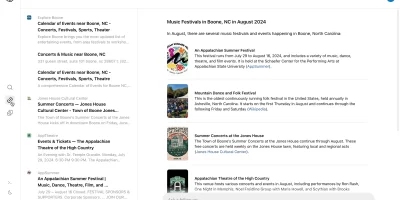It’s a matter of hours before Google IO 2018, where Google pulls back the curtain on what they have planned for the future of our favorite tech platforms. We’ve come to expect a lot from this annual event and this year is no different. There are surefire announcements, rumors abound, and speculation aplenty- where to begin?
A look over the full Google IO Schedule will give you an idea of what to expect (hint: a little bit of everything), but if there’s one thing we’ve learned about Google IO it’s to expect the unexpected. That’s exactly what we’re going to do- offer some speculation and crazy ideas on what could (but probably won’t) happen at Google IO 2018.
One thing is for sure: there will be lots and lots of Android.
Android Popsicle or Android Praline Pecan Pie?
 You can be almost certain that Google will announce the official Android P name at Google IO 2018, just as they formally graduated Android O to Android Oreo at 2017’s event. I’ve predicted Android names with limited success in the past and this year all signs point to Android Popsicle (back in 2013 I predicted Peppermint).
You can be almost certain that Google will announce the official Android P name at Google IO 2018, just as they formally graduated Android O to Android Oreo at 2017’s event. I’ve predicted Android names with limited success in the past and this year all signs point to Android Popsicle (back in 2013 I predicted Peppermint).
It’s practically written in stone that Android Popsicle will be the name- they’re colorful, refreshing, and invoke the light and happy feeling that Google wants to convey with the Android brand (not to mention Google’s Material Design). But it’s fun to root for an underdog, so I’ve got my eye on Android Praline Pecan Pie as a sleeper pick. After all, names of the official Android P download files on Google’s Developer site all contain “ppp” after the device codename.
- Pixel (codename sailfish): sailfish-ppp1.180208.014-factory-3e45bada.zip
- Pixel XL (codename marlin): marlin-ppp1.180208.014-factory-1ff7eb1c.zip
- Pixel 2 (codename walleye): walleye-ppp1.180208.014-factory-bfdceeea.zip
- Pixel 2 XL (codename taimen): taimen-ppp1.180208.014-factory-8e44f67a.zip
Coming back to earth for a second, this is a bit outside the realm of pure logic. Only the first letter of these codenames correspond to the Android version name with the remaining characters following a pretty strict naming convention. For example, Android 8.0 Oreo downloads start with OPM or OPD.
But hey, it’s fun to dream, and nothing is officially official. Android Popsicle? Android Pie? Or something else? Share your own Android P sleeper pick name in the comments.
Giveaway: FREE .APP Domains
In the wild west of “domaining” there were only five types of domain extensions that mattered:
- .com – by far the most popular
- .net – for people who couldn’t get a .com they liked
- .org – intended for non-profits but actually a dumping ground of randomness
- .gov – for official government use only
- .edu – for verified educational institutions
Then along came .info, .biz, .us, and a bajillion others. Early use of these extensions were often seen as red flags, warning a scammy/spammy site may lie a click ahead. After nearly two decades of domain squatting and bootstrapping we’ve been somewhat desensitized. Huge companies with limited budgets have made .io, .co, and lesser known extensions their home. Slowly but surely, credibility and familiarity have worn on suspicion.
Back in 2015, Google forked over $25M to purchase the rights to the .app extension. Just this week they began selling .app domains according to the following guidelines:
- March 29th, 2018 – Trademark holders invited to register
- May 1st – 8th – Early access period (open to public at premium)
- May 8th – General availability
You may notice that general availability coincides with the first day of Google IO. Coincidence? We think not. At GoDaddy, one of the most popular domain registrars, they further explain that the “Early access period” isn’t first come first serve:
Anyone may pre-register a .app domain during this phase. Multiple applications for the same domain will go to auction. If you are not awarded the domain, you will receive a full refund.
But what will they expect developers to do with the domains? How are .app domains different? For one, all .app domains come with HTTPS protocol for enhanced security. Check out this chunk from Google Domain Registry:
Now there’s a more secure domain for apps. From games to news to education to business, .app is the perfect home to promote apps on the web. The .app domain is a great place to showcase a unique and trustworthy destination, so users know they’re getting the real thing. Whether providing a relevant download link, deep linking, sharing screenshots, release notes, or reviews, .app is the place to share your app with the world.
That’s nice in theory, but Google has dropped the technical requirement that .app domains be used for app-related content. It would have been a nightmare to enforce, and so it seems the group of people that purchase .app domains will inherently determine the extension’s future. What better way to set .app forth on the right foot than by gifting a domain to the developers most likely to put it to good use?
In years past, Google has given away some hefty items for free to all attending developers:
- 2009 – HTC Magic
- 2010 – HTC Evo 4G, Motorola Droid, Nexus One
- 2011 – Galaxy Tab 10.1, Series 5 Chromebook, Verizon MiFi
- 2012 – Galaxy Nexus, Nexus 7, Nexus Q, Chromebox
- 2013 – Chromebook Pixel
- 2014 – LG G Watch, Samsung Gear Live, Moto 360, Google Cardboard
- 2015 – Nexus 9, Improved Google Cardboard
- 2016 – None
- 2017 – Google Home, $700 in Cloud Platform Credits
These past couple years, Google has successfully tempered giveaway expectations, putting more emphasis on developers and services. Hardware announcements were pushed to a separate event later in the year, built around the Pixel and Google’s growing collection of smart gadgets. Google has instead begun gifting credit to developer-focused services. Giving developers a free .app domain aligns with their newly clarified objectives.
We’re predicting that when Google closes their discussion of .app domains at the Google IO 2018 Keynote, they announce all developers in attendance get a coupon code for 1 free registration.
Extra credit: we wouldn’t be surprised to see the new Lenovo VR Headset given out either, considering its Daydream support. What do you think Google will give away at IO this year (if anything)?
Name your own Assistant
Among Google’s most successful ventures in the past few years has been Google Assistant, working in tandem with smart speakers such as the company’s own Google Home (not to mention Google Home Mini and Google Home Max). It launched as the most capable assistant, leveraging Google’s knowledge graph to answer all sorts of questions accurately, and its been steadily adding new features and capabilities.
One frustration has been the “Okay Google” and “Hey Google” hot word requirement, limiting the command to initiate Google Assistant to these two phrases. Whereas Amazon has named their assistant Alexa and Apple has Siri, Google’s assistant is the generically defined “Google Assistant”. This year, look for Google to allow users to set their own assistant names.
This would fall in line with promises Google made last year, using machine learning to provide a customized experiences to each user. You can already train Assistant to recognize voices, so allowing Mom, Dad, and the kids to each name their own Assistant wouldn’t be a stretch. A logical starting point would let each user select from a list of Assistants with predefined character traits and dispositions.
This could make branding Google Assistant a bit more difficult since there would be no defined name, but the tech seems inevitably headed in this direction. Developer APIs that allowed 3rd parties to build their own assistants – with their own unique personalities and features – as a layer on top of Google Assistant, would be a compelling addition.
If this is announced at Google IO 2018, look for a limited number of user-selected assistants to become available, temporarily avoiding the rush for people to give their Assistants all sorts of bizarre and devious names. Before long, rather than asking if your friend uses Google Assistant, you might be asking which Assistant they use and where they can download it.
We’re expecting Google Home and Google Assistant to play a HUGE part in Google IO 2018. It’s likely we’ll also see more advanced integration with Google’s productivity suite such as the newly redesigned Google Calendar and the newly launched Google Keep app.
YouTube TV Stick
Android TV hasn’t been updated in quite some time but that doesn’t mean Google isn’t hard at work in the television space.
Google’s ad-free “YouTube Red” program costs $10/month and also provides access to exclusive content and shows including the excellent and newly released “Cobra Kai“. Fans of the 1980s hit trilogy “Karate Kid” will understand. It’s currently free to try for one-month and worth a shot, if not for an ad-free experience or Cobra Kai than for the ability to keep YouTube audio playing in the background on your Android Phone.
Meanwhile, YouTube TV provides Live TV from 50+ networks at $40/month including local news and sports. Despite letting each household connect 6 accounts with unlimited cloud storage for DVR, YouTube TV hasn’t quite caught on.
Last month we caught a glimpse of a potential Google-backed TV stick that mashes together Android TV and Chromecast. It may not be what Google has up its sleeve, but considering the last big Android TV update was the Nexus Player in 2014, we’re hoping and expecting there is a big TV announcement or two in the cards.
Could Google launch a YouTube TV Stick at Google IO 2018? When Google launched Chromecast seemingly out of nowhere in 2013, the affordable $35 dongle became an overnight sensation. Lending the YouTube brand to a TV stick would make it an immediate consumer attraction, boosting visibility for their YouTube Red and YouTube TV services with a great promotional package. From a hardware perspective it would likely be the Android TV and Chromecast mashup we’re expecting, but designed to cater to YouTube’s worldwide audience and notoriety.
Would you buy a YouTube TV Stick that optimized an experience with YouTube Red and YouTube TV? Or would you prefer to stick with a more traditional Android TV Stick that combined an intuitive TV user interface with Chromecast functionality?
Google Prime
The breadth of Google products and services is mesmerizing. From Google Search to Google Fiber to Google Fi to Google Express to Google Drive to Google Plus to you name it- the company wants to be with us every stop of the day. It can be confusing for consumers to understand exactly what Google has to offer and where they can get it, especially in areas where offerings overlap ( Google Play Music and YouTube Music).
In my opinion, Google would be smart to offer bundled service for a monthly subscription, allowing users to enjoy a wide variety of paid Google services from across the board. The company’s bottom-line message should be that no matter what you want, Google can deliver it with one simple subscription.
This is a method that Amazon has employed with great success. Don’t believe me? Ask the people surrounding you right now if they have Amazon Prime. I bet the majority do. Either that or you didn’t ask.
Whereas Amazon started Prime with only free 2-Day shipping, they’ve kept adding services to the list of benefits over the years. Google would have to back-in to this philosophy, but it’s something they should consider (if they haven’t already). An announcement at Google IO 2018 would be a good place to make such a move.
Amazon recently increased their Prime subscription price to $119/year, roughly the same price as YouTube Red alone. That makes putting an affordable price tag on an all-inclusive Google-offering rather challenging. If Google were to go this route, they’d likely make “Google Prime” full of limited offers with the ability to upgrade a la carte. And that’s exactly what I would want.
Would you subscribe to an Amazon Prime-esque Google service that bundled together all of their various subscription services into one low monthly rate? And if so, what would you hope for it to include? What would be a fair monthly price? Let us know in the comments!
Wear OS Refreshed
The struggles of and disappointments with Android Wear has been well documented. To summarize: Android Wear smartwatches didn’t prove lucrative so Qualcomm stopped updating their wearable chipset. Without an effective alternative, lackluster hardware has been the standard for several years. During that time, Android Wear has languished.
Then earlier this year, Google decided to rebrand Android Wear to Wear OS by Google. At the most basic level, Google aimed to attract the attention of iPhone users who may have previously thought Android Wear smartwatches only worked with Android devices. The name change makes sense for that reason alone, but it also shows that Google is revisiting how to best position an aging lineup of neglected wearables.
At the most basic level we’ll get an earful about the new name with pretty graphs and charts showing impressive growth in wearables. They might have to manipulate the data to make it work, but they’ll get it done. What we’re hoping for is something much bigger: the announcement of a new Qualcomm chipset designed specifically for wearables along with some partner announcements in the hardware department. Even better would be a Google-designed smartwatch, paving the way for future wearables much the way that the Nexus line aimed to do for smartphones.
Google Lens: Potential Game Changer
It’s been awhile since Google launched the Pixel 2 and Pixel 2 XL, but many would argue it still has the best performing smartphone camera on the market. That’s largely thanks to Google’s camera software. Camera performance is often the differentiating factor of smartphone purchases and so the company has made their photo and video experience a priority.
Last year we saw a lot of updates in Google Photos including Shared Libraries, Photo Books, and greatly improved “Assistant” features to automatically compose highlight videos from your trips. It was also at Google IO 2017 that the company announced Google Lens.
As fans of Google Goggles will know, the concept of Google Lens isn’t new. Take a photo of something – anything, really – and Google will use contextual information to identify the subjects within your photo, predict what it is you want to see or accomplish, and serve it up on an actionable platter without having to anything else. A barcode might bring up purchase options, a landmark could bring up historical info, and a photo of a plant or insect might identify the species. Those are the basics, but we think Google’s plans for Lens are much more ambitious.
Google Lens was among the most promising demos at Google IO 2017. Almost a year later, most people without Pixel devices still don’t have access to the feature. Samsung tried something similar with Bixby Vision on the Samsung Galaxy S9 and S9 Plus, but it doesn’t feel like much more than a novelty in real-world use.
Look for Google to build on last year’s Lens announcement with some breathtaking demonstrations, showcasing how photos and videos can play a part in Google’s AI-driven ecosystem.
Google’s Next Big Thing
Nothing gets consumers more excited than Google Moonshots, they’re big picture ideas that have the chance to change the world as we know it. Shoot for the moon, even if you miss you’ll land amongst the stars? … or something like that?
It’s exciting, sure, but fiscally responsible? Not exactly. Ignoring immediate profit for the sake of developing game changing technologes is admirable, but not for the shareholders of a publicly traded company. Thus many moonshots were recently grounded.
That being said, Google takes great pride in the innovative work happening at Google X, where their current, past, and graduated moonshots live. Current projects include Project Loon, Project Wing, and Makani. Graduated projects include Waymo and Glass. And then there are all the failed initiatives, put to rest in the Moonshot graveyard.
You can expect that we’ll get updates on current Google X projects, but I wouldn’t be surprised if Google makes at least one big announcement in this realm. Considering the very real-world implications that autonomous cars will have in the next decade, I’d bet that Google will showcase their recent work with Waymo, perhaps interweaving the narrative with some updates regarding Android Auto. Updates might be relegated to higher-level partnerships and test studies in select cities, but a glimpse into how Google fits into our self-driving future makes sense.
If you could pick one Google X “Moonshot” concept to see the light of day, what would you most like to see?
What are your predictions?
Make your bold and crazy predictions for Google IO 2018 in the comments and be sure to rush back for “I told ya so” moments over the next couple days.
And let us know what specific things you’d like to see from Google IO!











Comments